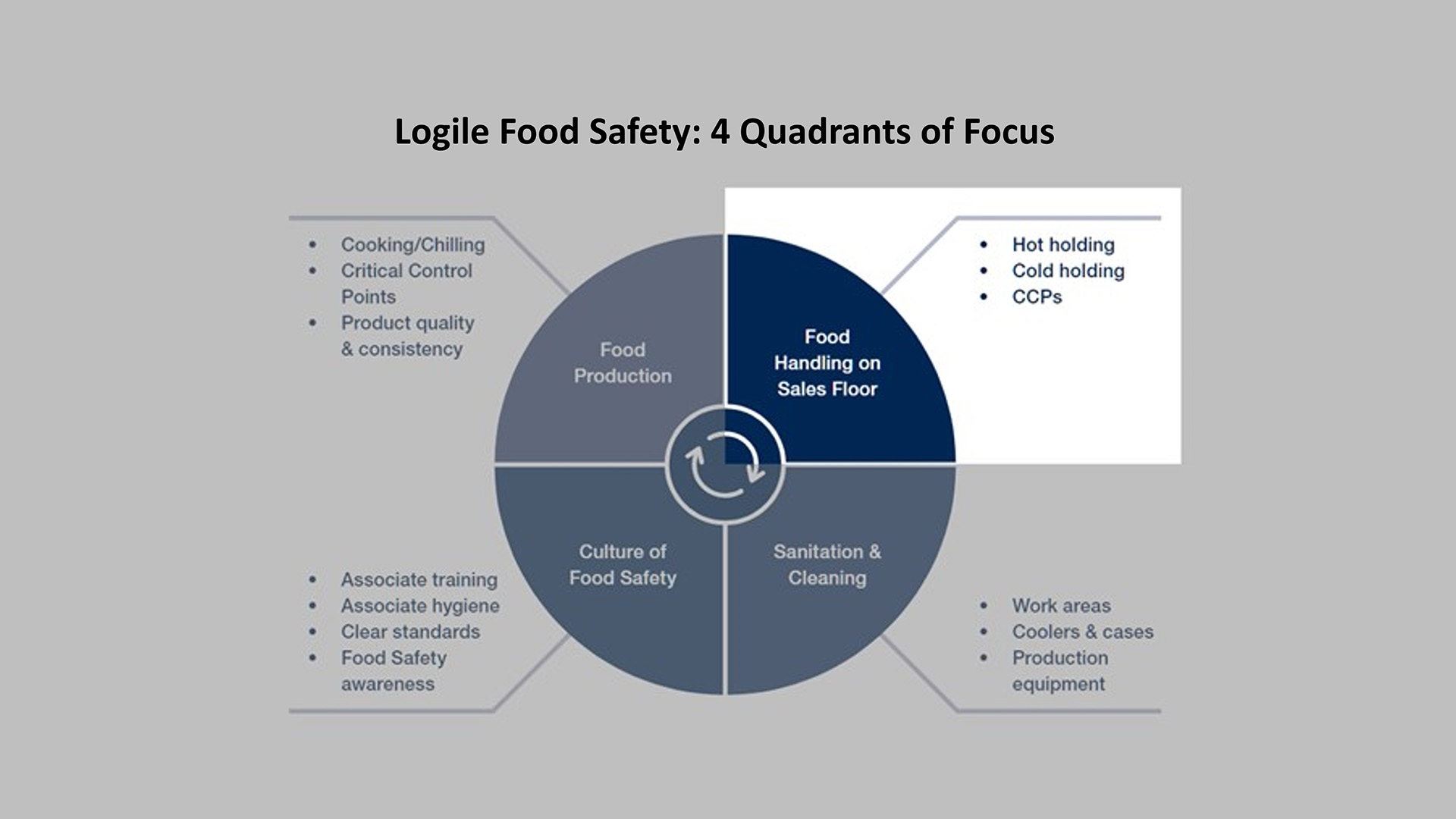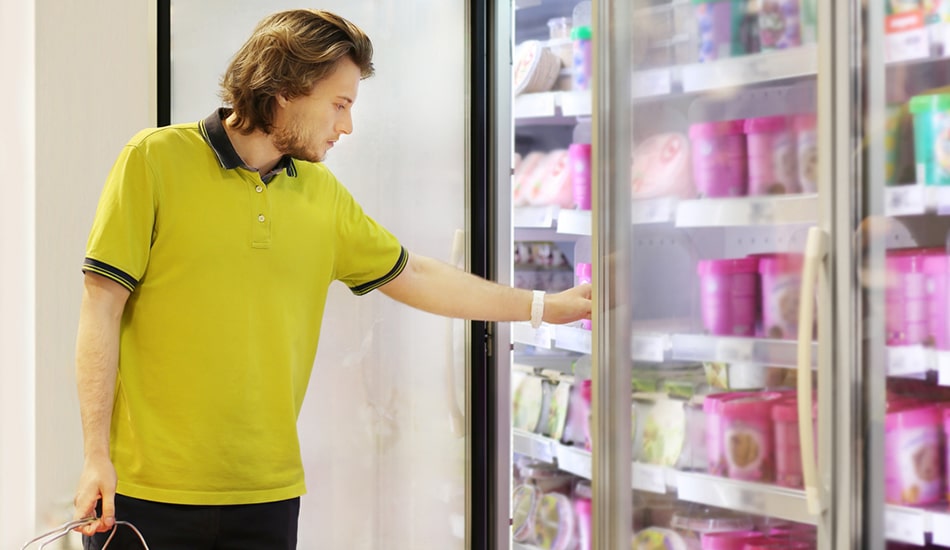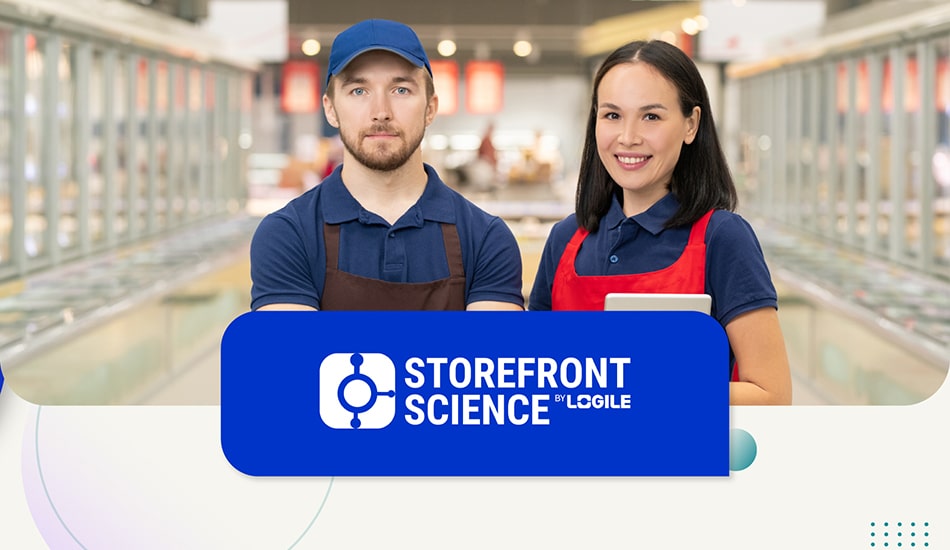Denise Cole, Senior Manager of Product Management – Food Safety (US)
Nathaniel Sheetz, Senior Director of Product Management (US)
Neeta Dash, Senior Product Specialist (US)
Maintaining food safety in hot and cold holding environments
As we’ve discussed in previous posts, there are many challenges to building, executing, managing and monitoring a successful food safety program. The consequences of falling short range from failed regulatory inspections to an outbreak of foodborne illness that injures or kills customers and results in bankruptcy, lawsuits and criminal charges. In our most recent post in this series (see the first post here), we focused on cooking and chilling processes, which we described as the first quadrant of food safety. In this post, we will focus on the second quadrant: food holding and handling.
In retail environments, the risks associated with holding food can be mitigated in a variety of ways. The most ubiquitous is temperature control, in which hot foods are kept above a minimum temperature and cold foods are kept below a maximum temperature. But some products, for practical purposes, must rely on other approaches to limiting pathogen growth. Sushi rice, for example, is best kept safe by keeping it sufficiently acidic, while some foods for immediate consumption, like pizza, might use a “time as a control” strategy that relies on discarding product after a pre-determined amount of time.
Generally speaking, however, temperature control is the tool used most to prevent pathogen growth in retail food holding environments. The concept may seem simple—keep at-risk foods either hot enough or cold enough—but a variety of exterior forces can rapidly impact temperatures, such as customer product handling, store associate activities, ambient air temperature, humidity and equipment failure, potentially resulting in the growth of harmful organisms. Since these forces can often act in ways that can be difficult to detect in real time, retailers often lack complete confidence that safe temperatures are being maintained throughout a food facility.
To gain visibility into temperature challenges and thereby accelerate mitigation efforts, retailers typically rely on as many as three methods: hardwired alarm systems, manual temperature checks, and digital temperature monitoring.
Hardwired alarm systems
Hardwired refrigeration alarm systems are a great way to monitor discharge air temperatures within cold holding cases and notify management if an asset has malfunctioned. However, such systems do not provide visibility of temperatures at the product level of an asset, which is where risk lives. Cases designed to enhance product display and ease of selection by customers may lack sufficient cold air flow to all parts of the case, allowing other forces to impact food temperature. For example, nearby heat sources such as heating vents or outdoor summer temperatures may cause temperatures to rise within a portion of a cold holding case, while product overstocking, signage and display blocks can hinder air flow within the asset.
Once cold food temperatures have risen for any reason, risk is increased because many cold holding assets are simply not designed to lower internal food temperatures back into the safe zone, or at least not quickly enough to keep the food safe. These scenarios occur without actual asset malfunction, which is why they fly beneath the radar of hardwired surveillance. Furthermore, some types of assets, such as mobile display cases and hot holding units, are not able to be wired into an alarm system.
Manual temperature checks
Recognizing these limitations, many retailers rely heavily on manual temperature checks to ensure that their food is being maintained at safe temperatures. Such checks have the clear advantage of going directly to the source of the risk by measuring the temperature of the product itself. But the downsides of manual checks are obvious: first, up-to-date temperature data is only available when an employee captures it (typically every few hours), and second, the process is labor intensive. Furthermore, if temperatures are still recorded in paper logs, then there is no remote visibility of temperature data.
Digital temperature monitoring
Because of these limitations, many food retailers in recent years have begun exploring digital temperature monitoring solutions. Such systems provide visibility by the introduction of wireless temperature sensors in areas where food temperatures are most affected by external forces, that is, the most vulnerable areas of an asset. These sensors can operate in mobile assets and, with the latest technology, hot holding units that cannot be hardwired into traditional alarm systems. Temperature measurements are captured on a schedule, such as every 10 minutes, and continue even during power outages, allowing for near-real-time temperature monitoring while keeping the labor force focused on activities that drive sales.
But the sensors themselves are not sufficient; they must be supported by a software solution capable of collecting and analyzing data to generate alerts and offer guidance to determine causes and implement the most appropriate corrective actions to keep food safe.
Having a comprehensive view of temperatures at product level is just one of the many benefits of implementing a digital temperature monitoring system. In future entries of this series, we will explore other benefits of letting this exciting technology do the work, as well as how it can be incorporated into a fully integrated food safety management system. We will then turn to the third quadrant of food safety and discuss the value of using technology to manage hygiene, cleaning and sanitation activities within the context of a comprehensive food safety strategy.




